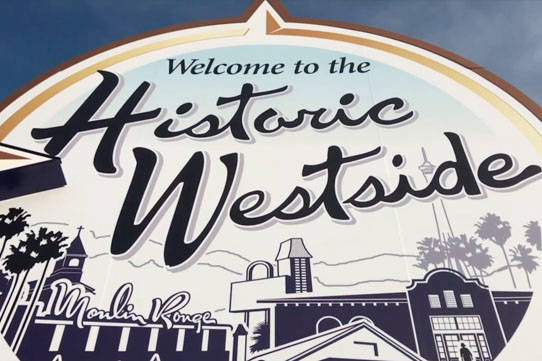Historic Westside: How Las Vegas’ Black district was born
In the 1920s, no segregation laws barred Black citizens from participating in community life, but with tourism on the rise following the legalization of gambling in 1931, casino owners began restricting their patrons to whites only.
That’s how the Westside District or the Black Strip was born.
“Now that you know you’re coming into the Historic Westside, you know you’re coming to a special place, because it represents so much in the history of our city, not only for the Black people who live there, but for the city,” Las Vegas City Councilman Cedric Crear said for an interview for the Review-Journal’s 7@7.
By 1947, four Black-owned clubs could be found on Jackson Street: the Brown Derby, The Chickadee, the Cotton Club and the Ebony Club.
The area was booming by the 1940s and 1950s, in part because Black entertainers who worked in the clubs on the Strip weren’t allowed to stay there. When they finished their performances, they came to the Westside clubs to party, relax or jam.
The Moulin Rouge Hotel, the first integrated hotel-casino in Las Vegas, opened on May 24, 1955. With gourmet food, a pool, a casino, a lounge and a showroom, it had all the same amenities as hotels on the Strip. It quickly became a Westside landmark, appearing on the June 20, 1955, cover of Life Magazine.
But it crashed just as quickly as it boomed, closing its doors in November 1955. By December its owners had filed for bankruptcy.
Once segregation lost its hold on the city, the area fell into disrepair as the more prosperous Blacks moved to other areas of the community or chose to work for the higher wages offered on the Strip.
In 1971, Las Vegas housing codes were modified to prevent redlining, allowing Blacks to move out of the Westside.
Contact Renee Summerour at rsummerour@reviewjournal.com. Follow @SummerourTV on Twitter.























